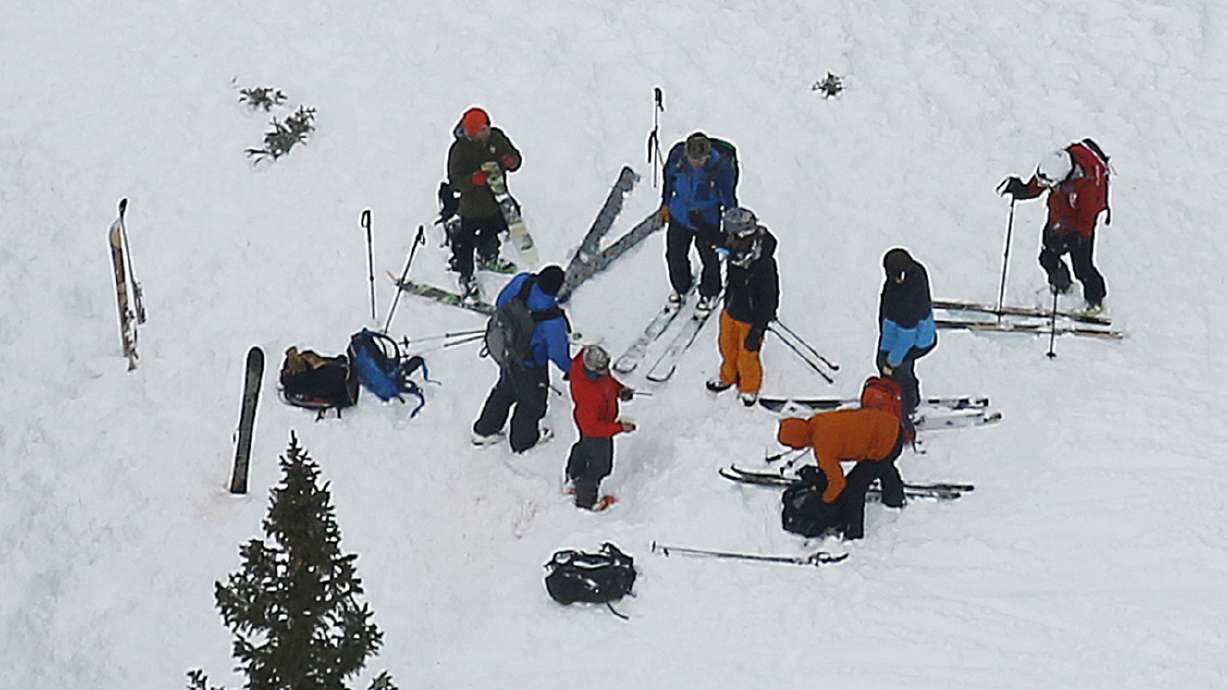Estimated read time: 4-5 minutes
This archived news story is available only for your personal, non-commercial use. Information in the story may be outdated or superseded by additional information. Reading or replaying the story in its archived form does not constitute a republication of the story.
SALT LAKE CITY — An avalanche last week near Alta buried an expert skier, who survived thanks to quick action from others in his group.
After pulling him out of the snow and finding an open compound fracture in his leg, his companions called Alta Central Dispatch to request medical assistance.
The rescue operation was successful, but in its wake, many are questioning what the correct approach is for reporting emergencies in backcountry areas near Salt Lake City.
The question most are asking is: Should you call Alta Central Dispatch or 911? The answer depends on whom you ask.
In light of the confusion, dispatchers, search and rescue officials and other avalanche responders are meeting Tuesday to determine whether a unified policy for reporting emergencies is needed and in what areas it would apply.
"Everybody kind of wants to put this in a nice, tidy little box, and it's not as tidy as you might think," said Unified Police Sgt. Travis Skinner, who oversees many search and rescue operations in Salt Lake County. "There are advantages and disadvantages to calling each dispatch center."
911 calls in the Salt Lake area go to the Valley Emergency Communications Center, or VECC, in West Valley City, where dispatchers can get an approximate GPS fix on the caller from the cellphone signal.
Alta Central Dispatch doesn't have that capability, but dispatchers there are familiar with backcountry areas and their names, such as the Jaws Chute in upper Days Fork where the avalanche fell on Christmas Eve.
For most avalanche rescues, you really need to be rescued by your partners who are right there on the spot because you don't have very long to live under an avalanche most of the time
–Bruce Tremper, Utah Avalanche Center Director
Historically, the Utah Avalanche Center has encouraged skiers to contact Alta's dispatch in the event of a backcountry emergency. Bruce Tremper, the center's director and avalanche forecaster, says its unclear if that recommendation will change after Tuesday's meeting.
"For anyone who lives or who regularly recreates up there, most people have always (called Alta Central Dispatch). It's just kind of an old tradition," Tremper said. "But it's sort of in flux right now."
Regardless of how incidents are initially reported, all rescue efforts in Salt Lake County require approval from county officials through the Unified Police Department's Dispatch Center. Skinner said Alta is well acquainted with the process of getting that approval, as well as how search and rescue operations are conducted.
VECC dispatchers last month underwent training in search and rescue operations by observing crews working with Life Flight helicopters during mock searches at Snowbird Ski Resort, according to VECC emergency preparation coordinator Beth Todd.
"It really actually helps provide all the pieces of the puzzle," Todd said. "We're very familiar, obviously, with the 911 aspect and what we do here in the dispatch center, but not as much of what goes on out in the field. So this was a chance to get the dispatchers out into the field to see how the operations are actually done and give them a greater base of knowledge for incidents involving avalanches."
Rescue resources are accessible through both dispatch agencies, and those in need will likely get the same outcome, regardless of the number they choose to dial, she said.
"I think no matter which way they decide to make that phone call, we can get help to them by either means," Todd said.
Skinner agreed.
"It really just depends on your knowledge of the backcountry, and if you default to any one of those systems, you're going to end up achieving the same process," he said.
Because rescue efforts can take time, which is especially crucial for a person buried in an avalanche, skiers in the area should begin searching for missing persons immediately, Tremper said.
Emergency equipment and training can give victims and their companions an advantage that may tip the scale, especially in backcountry areas. The group of skiers in last week's avalanche were all wearing avalanche rescue beacons and were able to locate the buried man within minutes using probes.
"For most avalanche rescues, you really need to be rescued by your partners who are right there on the spot because you don't have very long to live under an avalanche most of the time," Tremper said. "So you really need to have your partners get you out from under the snow very quickly. A lot of times, by the time rescuers arrive, it's just too late."








